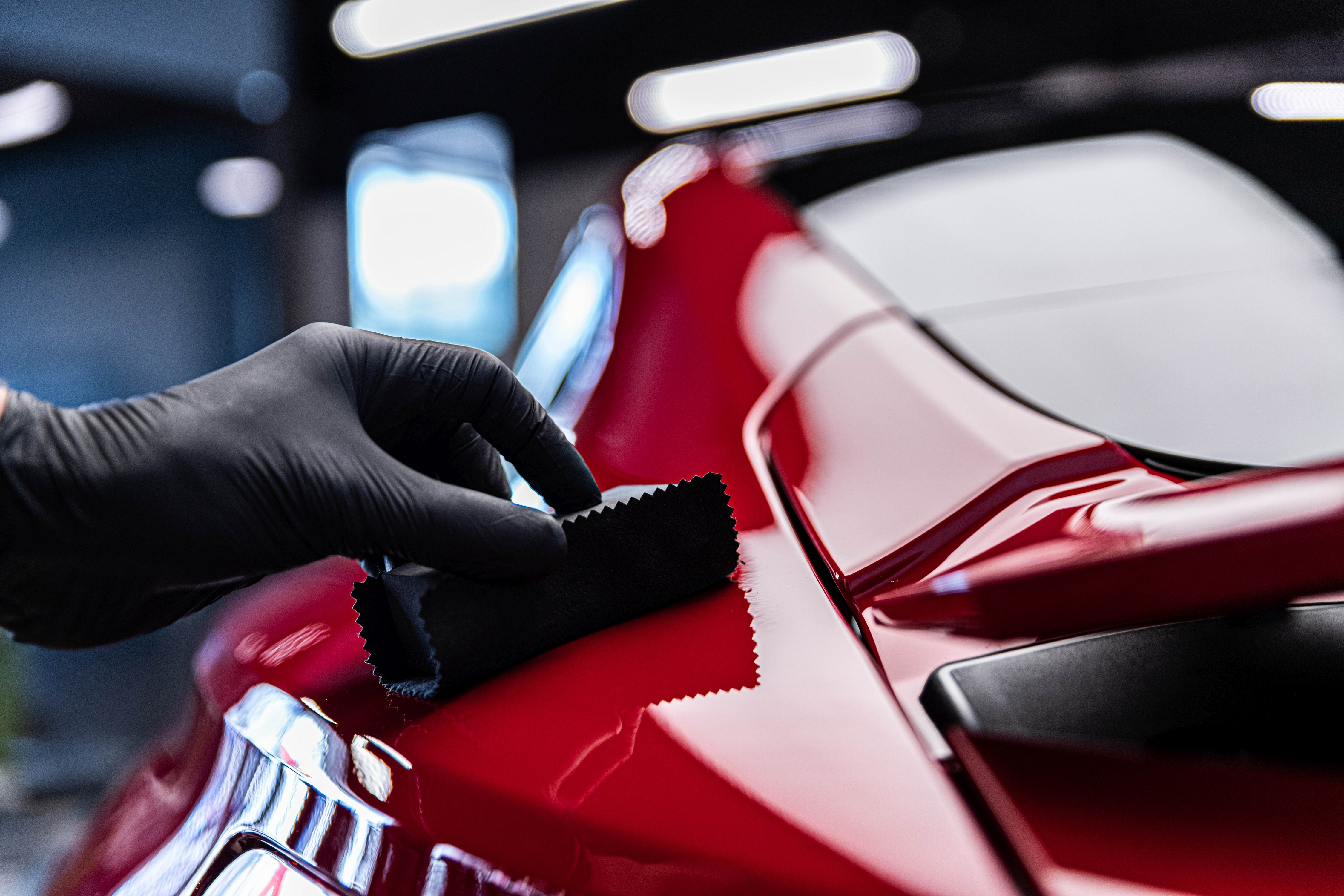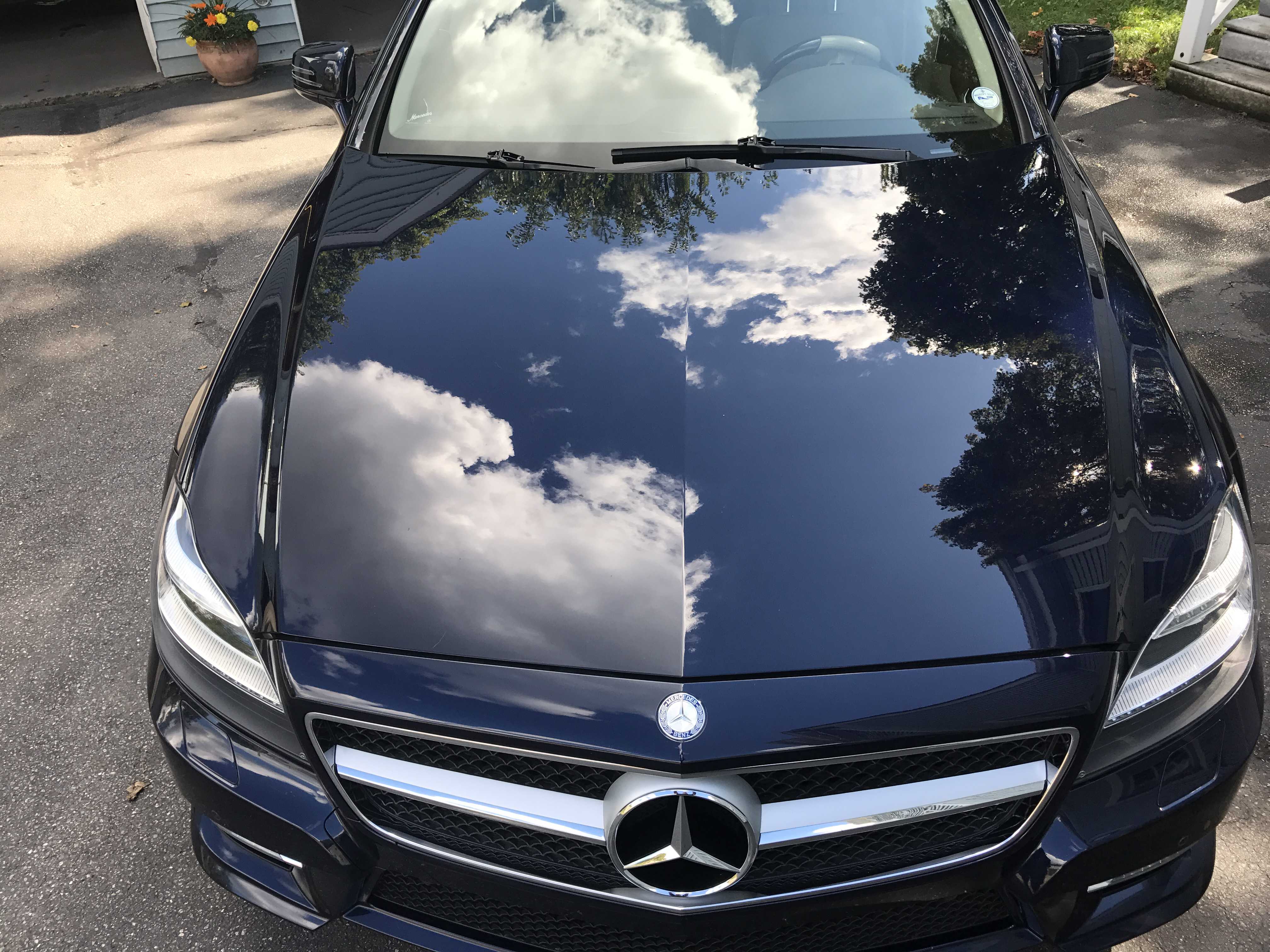How Ceramic Coating Newark protects against minor abrasions
Wiki Article
Checking out the Science Behind Car Ceramic Coating and Its Safety Characteristics
The scientific research of car ceramic coating presents a fascinating research study in innovative auto security. Composed primarily of silicon dioxide and polymers, these finishes create a durable bond with vehicle paint. This interaction improves resilience against environmental dangers while providing hydrophobic advantages. Nonetheless, the intricacies of how these coverings job and their long-term advantages remain much less recognized. Unpacking these details reveals why ceramic coatings are becoming a recommended selection for automobile treatmentWhat Is Ceramic Coating?
Ceramic coating is a fluid polymer that chemically bonds to the surface of a car's paint. This advanced safety layer boosts longevity and uses exceptional resistance to ecological variables. Unlike conventional wax or sealers, which give short-lived security, ceramic finishes create a long-lasting guard that can endure harsh problems such as UV rays, acidic pollutants, and extreme weather condition. When used properly, the coating creates a hydrophobic surface area, causing water to grain and slide off, which assists in preserving the lorry's cleanliness. Furthermore, it supplies boosted gloss and depth to the paint, making the car appear even more polished and lively. The application process normally includes extensive surface area prep work, including cleaning and polishing, to assure peak bonding. Consequently, ceramic coatings are becoming significantly preferred amongst car enthusiasts and those seeking to shield their financial investments, promising to maintain the car's visual appeal while reducing the regularity of upkeep.The Composition of Ceramic Coatings
The elaborate formulation of ceramic finishings largely consists of silicon dioxide (SiO2), which is stemmed from natural sources like quartz and sand. This vital component supplies the structure for the coating's sturdiness and safety qualities. Along with SiO2, ceramic finishings frequently include numerous polymers and ingredients that boost adhesion, adaptability, and resistance to ecological factors. These compounds function synergistically to produce a durable obstacle against pollutants such as dirt, chemicals, and UV rays.Furthermore, some formulations integrate titanium dioxide (TiO2) or other nanomaterials, which can augment the coating's hydrophobic buildings, resulting in better water repellency. The precise composition can differ significantly amongst manufacturers, affecting efficiency and longevity. Inevitably, the combination of these components culminates in a safety layer that not just improves the aesthetic appeal of vehicles but additionally serves to lengthen their life expectancy by protecting the surface area from possible damage.Exactly How Ceramic Coatings Job
Recognizing exactly how ceramic layers work involves exploring their chemical make-up, which adds to their safety high qualities. The application process is necessary for achieving ideal outcomes, while longevity and toughness aspects determine the coating's efficiency with time. Together, these components highlight the advantages and efficiency of ceramic layers for car defense.Chemical Composition Explained
While several car owners seek long-lasting defense for their lorries, the chemical composition of ceramic layers plays an essential role in their effectiveness. These layers mainly consist of silicon dioxide (SiO2), which is stemmed from natural minerals. This compound forms a solid bond with the lorry's paint, creating a sturdy, protective layer. Furthermore, numerous ceramic layers have titanium dioxide (TiO2), improving their hydrophobic buildings and resistance to UV rays. The presence of polysiloxanes can further enhance versatility and resilience. Together, these elements add to the coating's ability to repel water, dust, and impurities, while additionally supplying a high-gloss coating. Understanding this chemical foundation aids car owners appreciate the durable defense supplied by ceramic finishes.Application Refine Review
Applying ceramic coatings involves a thorough procedure that guarantees optimal bonding and security for the lorry's surface area. At first, thorough cleaning and purification of the car's exterior are executed to get rid of dirt, gunk, and previous waxes. This step validates that the surface area is totally free from impurities that could impede bond. Following this, the paint is usually polished to boost quality and remove any type of flaws. As soon as prepared, the ceramic coating is applied in tiny sections making use of an applicator pad, permitting uniform protection. The coating is then entrusted to cure, creating a strong chemical bond with the surface. Correct curing times and problems are essential, as they verify the coating accomplishes its optimum performance and protective high qualities.Longevity and Resilience Aspects
Ceramic finishes are created to supply lasting protection via their sophisticated chemical structure, which produces a durable obstacle versus ecological impurities. The longevity of these layers is influenced by aspects such as the density of the application, the top quality of the item, and the problems under which the automobile is revealed. Top notch ceramic coatings can last a number of years, withstanding scrapes, UV rays, and chemical discolorations. Correct upkeep, including regular cleaning and routine reapplication, can even more improve durability. In addition, ecological aspects like climate and exposure to toxins can impact the life expectancy of the coating. On the whole, when applied and preserved properly, ceramic coverings use outstanding toughness, making them a preferred choice for car lovers looking for to preserve their lorry's appearance.Hydrophobic Qualities and Water Repellency
Hydrophobic buildings are a hallmark of high quality car ceramic layers, considerably enhancing the automobile's surface performance. These coverings create a molecular bond with the car's paint, leading to a surface area that fends off water effectively. When water enters contact with a ceramic-coated surface area, it beads up and rolls off, minimizing the quantity of fluid that stays on the paint. This habits not just adds to an aesthetically pleasing appearance however also minimizes the buildup of contaminants such as dust, grime, and roadway salts.The improved water repellency causes less complicated cleansing and upkeep, as much less initiative is required to remove undesirable materials. Additionally, the hydrophobic nature of ceramic coatings helps in stopping water places, which can mar the finish of uncoated surface areas. In general, the incorporation of hydrophobic properties in ceramic coverings plays a necessary duty in keeping the car's pristine look while streamlining maintenance.Defense Versus Scratches and UV Damages
Car ceramic finishes provide substantial security versus scrapes and UV damages. The scrape resistance device creates a resilient layer that takes in effects, while the UV shielding benefits aid preserve the automobile's paint integrity over time. Together, these attributes add to a longer-lasting and visually attractive finish.Scrape Resistance Mechanism
Making use of sophisticated technology, ceramic layers give a durable guard against scratches and UV damage, enhancing the long life and look of car surface areas. The scrape resistance system of these coatings is connected to their one-of-a-kind molecular structure, which creates a long lasting bond with the automobile's paint. This bond develops a hard, protective layer that can take in impacts and stand up to abrasions. Furthermore, the smooth surface area of the coating minimizes friction, making it challenging for contaminants to stick and cause scrapes. The chemical composition of ceramic finishings frequently consists of nanoparticles that reinforce the protective layer, additional boosting its strength. Consequently, vehicles treated with ceramic layers exhibit markedly improved scratch resistance contrasted to traditional wax or sealers, ensuring a beautiful surface with time.UV Shielding Perks
The safety top qualities of ceramic finishes expand beyond scratch resistance to include substantial UV protecting benefits. These finishings create a robust obstacle that reflects damaging ultraviolet More hints rays, protecting the automobile's paint and underlying materials. Long term exposure to UV radiation can cause fading, oxidation, and degeneration of the paint finish. By including ceramic finishes, vehicle proprietors can effectively minimize these risks, preserving the visual appeal and honesty of their vehicles. In addition, the UV blocking buildings add to enhanced long life, minimizing the frequency of repainting and upkeep. Inevitably, the assimilation of ceramic finishings provides a complete option for safeguarding automobiles from the damaging impacts of sunlight exposure, ensuring a sustained, vibrant look with time.The Longevity and Upkeep of Ceramic Coatings

Frequently Asked Questions
Can Ceramic Coating Be Applied to Any Type Of Kind Of Vehicle?
Ceramic coating can be related to various kinds of lorries, including cars, trucks, and motorcycles. However, surface area preparation and compatibility with specific materials are important for suitable bond and efficiency of the coating.Just How Much Does Ceramic Coating Generally Price?
Ceramic coating typically sets you back between $500 and $2,000, depending upon elements such as lorry size, coating quality, and specialist application. The investment can supply lasting security and improve the car's look in time.
Is Expert Application Needed for Ideal Results?
The requirement of expert application commonly depends upon preferred results. Experts generally assure proper surface prep work and application methods, resulting in excellent bonding and durability of the coating, which might be testing for inexperienced individuals to achieve.Can Porcelain Coatings Be Removed or Repaired?
Ceramic layers can be gotten rid of or repaired, though the process may require particular solvents or strategies - Ceramic Coating Newark. Appropriate elimination is necessary to prevent damage to the underlying surface, highlighting the relevance of professional support for ideal outcomesread more
How Does Porcelain Coating Compare to Standard Wax?
The contrast between ceramic coating and traditional wax exposes that ceramic coverings provide superior toughness, enhanced security against environmental contaminants, and longer-lasting luster, while wax requires a lot more frequent application and gives less total resistance to damage.Report this wiki page